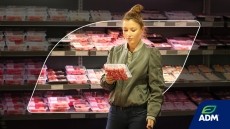One-third of meat products in France breach labelling and traceability requirements

In April 2015, origin labelling became mandatory for fresh meat products in France.
Three years on, France’s Directorate-General for Competition, Consumer Affairs and Fraud Control (DGCCRF) undertook an investigation to determine whether meat producers were complying.
Now, the results are in. And according to the DGCCRF, close to one-third of meat producers are failing to meet labelling and/or traceability requirements.
More than 30% breach requirements
Consumers are increasingly concerned about their food comes from. In the meat sector specifically, food quality issues – such as the 2013 horsemeat scandal – have placed origin front and centre of consumers’ minds.
The DGCCRF therefore sought to determine how compliant producers are in the beef, sheep, pork, and poultry sectors when it comes to labelling and traceability legislation.
Throughout 2018, investigators looked at 1,926 establishments, from large and medium-sized stores, to butchers, wholesalers, cutting and processing plants, slaughterhouses, breeders that sell directly, and restaurants.
Overall, 2,150 products were analysed, with at least 30% presenting ‘anomalies’ concerning labelling and traceability standards.
Cases of ‘Francization’ and more
Notable concerns included cases of ‘Francization’, whereby producers make consumers believe a foreign product is of French origin, and false allegations relating to the variety of animal. Messaging concerning the regional origin of meat products and quality logos were also found to be problematic.
In close to 40% of the establishments inspected, the DGCCRF issued warnings, injunctions, or filed reports.
Particular trends were noted by the Directorate of the Ministry of Economy. In traditional butchers and butcher’s departments in large- and medium-sized operations, for example, the absence of origin labelling was ‘frequent’ – particularly for veal.
Since country of origin labelling is marked as ‘French’, the DCGGRF said professionals refrain from indicating the origin of the meat.
In retail, meat packaging on the whole was found to clearly delineate the origin of the meat, as well as whether the cut is tender. But this was not the case everywhere, noted the DCGGRF: “It is not uncommon to see the presence of approximate, even misleading, promotional advertising posters.”
DGCCRF to check back this year
The investigation also revealed issues with traceability management software, particularly in large- and medium-sized stores.
According to the DCGGRF’s findings, sometimes butcher’s department managers did not know how to analyse recorded data, there were no self-checks of traceability procedures, neither the labelling information (batch number, approval numbers) not the consistency of the batches were checked, and entry errors when recording batches on arrival or at the time of packaging were not detected. Staff, in certain facilities, had not been trained in the traceability management software, the DGCCRF added.
“Professionals must be aware of the issues related to the implementation of reliable traceability procedures in their establishments,” the DGCCRF urged. “In this regard, the investigators observed that the establishments which now fully comply with these procedures are those which have previously been checked and [asked] to comply.”
The DGCCRF confirmed it is renewing checks on those operators concerned this year.

























